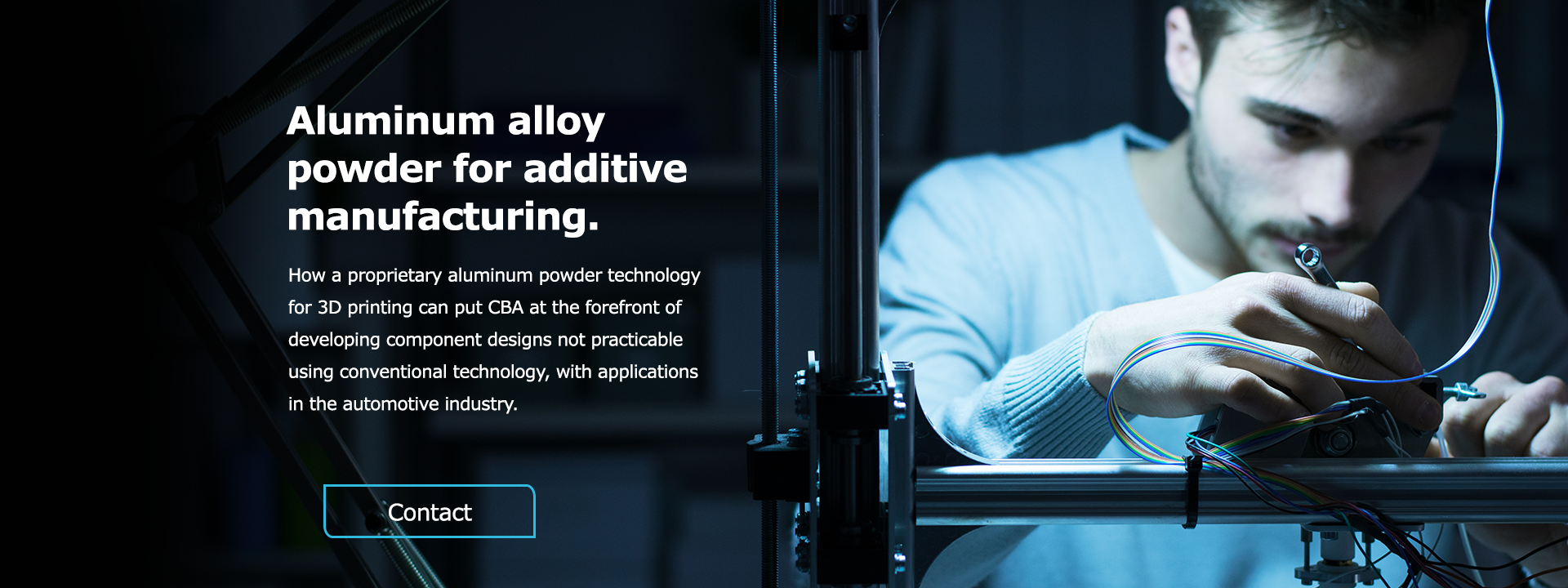Aluminum alloy powder for additive manufacturing
The future of manufacturing is increasingly agile, sustainable and customizable. Process automation and new technologies, such as 3D printing or additive manufacturing (AM), are turning production lines into genuine innovation hotbeds and creating new materials applications that can benefit the automotive industry.
According to a recent report from renowned technical, market, and strategic consulting firm Wohlers Associates, new AM applications have seen dramatic, double-digit growth over the previous 19 years (WOHLERS, 2018).
Sales of metal AM systems, for example, grew by a significant 80% from 2016 to 2017—from 983 to 1,768 units. The market for AM-produced components is expected to be worth $8.4 billion by 2025, according to the firm.
As part of this trend, CBA is working to develop an aluminum alloy powder designed specifically for additive manufacturing and 3D printing—a process of joining materials to make parts from 3D model data, usually layer upon layer, as opposed to subtractive manufacturing and formative manufacturing methodologies (ISO/ASTM 52900:2015).
Locally developed raw materials could make AM a viable solution for prototyping and production of lighter-weight and stronger parts shaped into geometries not previously feasible with conventional methods. This is another example of the way CBA’s portfolio is flexible and responsive to changing markets and trends.
About the development process


“CBA’s collaboration with ISI/SC on additive manufacturing research demonstrates that Brazil can harness existing local capabilities to drive innovation in value chains, raw materials and new markets that are at the technological frontier, making our local industry more competitive.”
Henrique Rodrigues Oliveira – A Laser Manufacturing and Processing Researcher at ISI.

“A CBA busca a prontidão e o pioneirismo em soluções inovadoras como a tecnologia em Impressão 3D, fornecendo ao mercado peças sustentáveis e custamizáveis a necessidade dos nossos clientes. Assim como a parceria com o time do ISI/SC, estamos abertos ao desenvolvimento com potenciais parceiros para testar peças em impressão 3D metálica, com o pó de alumínio, para diversos segmentos de mercado em modelos de negócios competitivos.”
Nataly Yoshino - Gerente de Desenvolvimento de Mercado e Inovação da CBA.
Benefits

Parts can be produced in small quantities at lower unit costs. Process and personnel overheads are also reduced.

Fast-tracked production from digital design to physical model supports rapid prototyping.

AM is uniquely capable of producing complex geometries that are not possible using conventional methods.

Products are fully customizable to meet specific requirements.

Low-volume manufacturing minimizes waste, reduces energy use, and ensures raw materials are used more efficiently.

The production process is safer than conventional methods.

Less time is taken from order placement to product delivery.

AM-produced parts are lighter-weight, stronger and have a better surface finish compared to other processes, such as casting.
Value offer
An aluminum alloy powder produced locally by CBA can make local additive manufacturing more economically feasible and competitive in the future. If we were to compare the costs of conventional product development— including all the various processes involved—the business case for metal additive manufacturing is compelling.
Below are several real-world examples of aluminum additive manufacturing applications in the automotive industry:
- Renault Europe: a prototype truck engine produced by 3D printing showed good durability and strength. The engine is also smaller, lighter-weight and easier to assemble.
- Czinger 21C: a 3D-printed hybrid hypercar developed by Divergent 3D as the first vehicle of its kind to be built with no tooling and with an unprecedented number of fully 3D-printed parts.
- Porsche: a prototype electric drive housing that is 40% lighter, reducing overall weight by 10%. Production time has been reduced by 90%, numerous functions and parts have been integrated together, and stiffness has improved in stressed areas.
CBA is committed to its strategy of being a preferred provider of solutions and services to the automotive industry, and a market leader in technological development in support of the industry. We are ready to discuss potential partnerships to test metal AD applications using aluminum alloy powder to produce functional automotive parts.
Are you looking for a partner to help you stay ahead of market, consumer and technology trends?



